My last scratch build - lots of fun scribing flame cuts on this one! I've added a bit of fluff for the design below the images too.
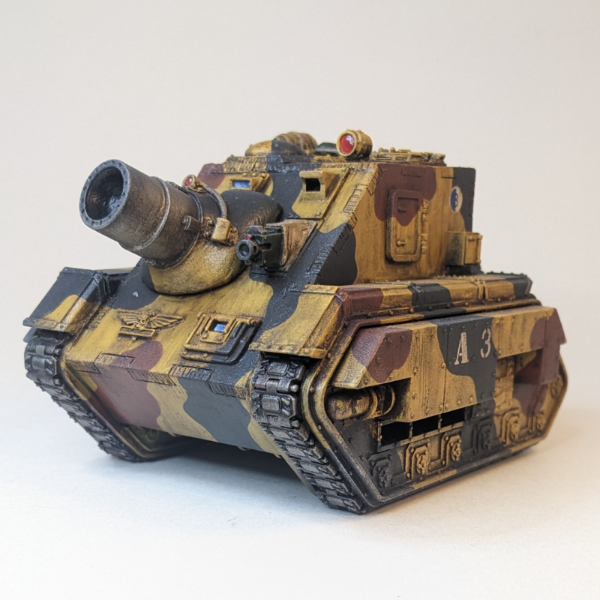
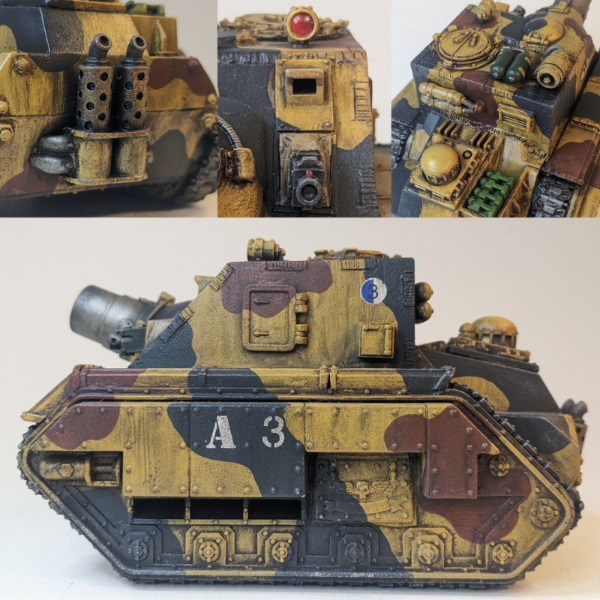
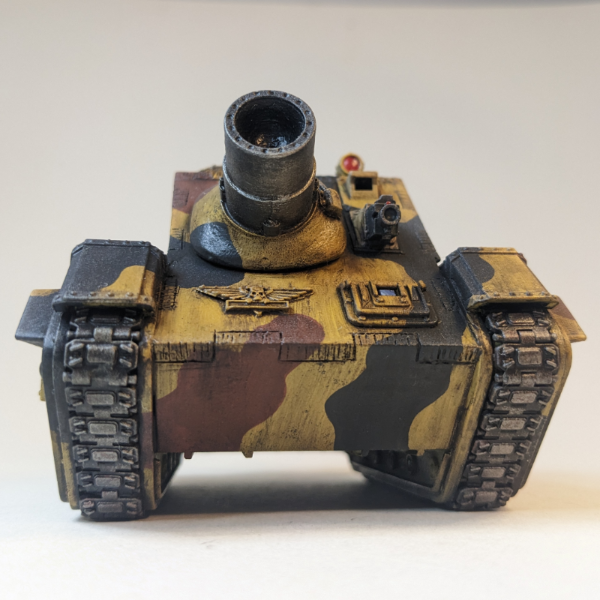
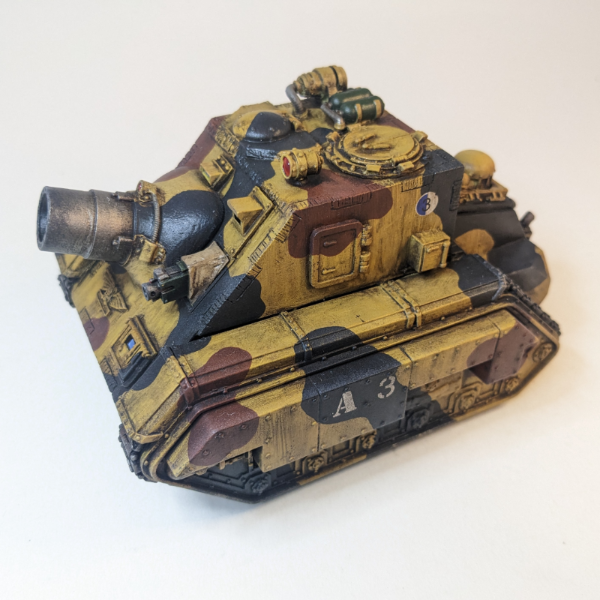

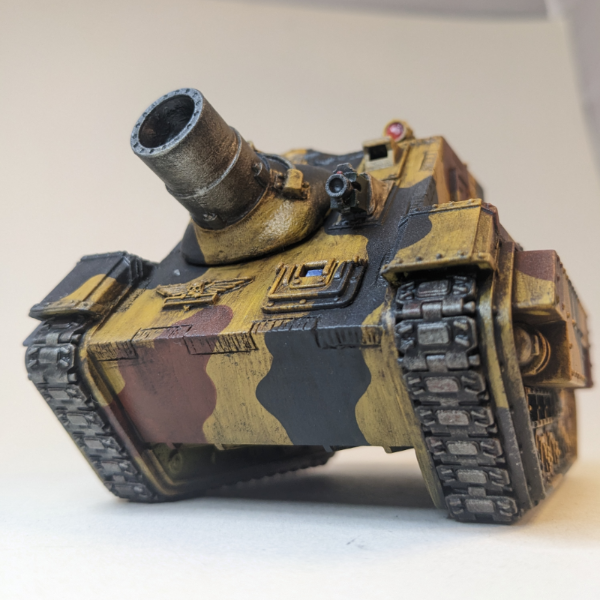
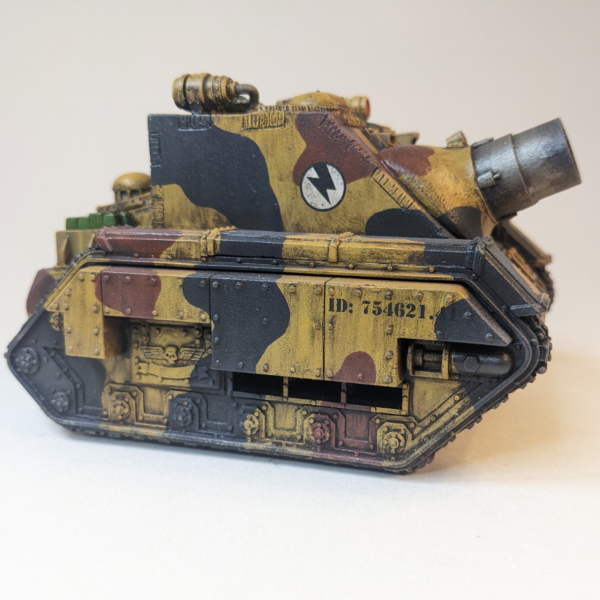
Gladiator Assault Tank.
First manufacured on the manufactorum world Canach III in the Segmentum Obscuras, the Gladiator was first deployed as a stopgap measure during the 11th Black Crusade.
Renegade forces had blockaded the Canach system and had laid siege to the sprawling manufacturum complexes on Canach III. While the chances of Imperial relief forces making it through the blockade were low, Canach III still had vast stockpiles of
raw materials to continue manufacturing tools of war, even as shells and shrapnel were bursting amongst the production lines.
Unfortunately for the defenders, Canach III's production capacity was deadicated to the manufacture of the Chimera transport, with it's exports equipping armoured fist regiments across the sector. With its production capability so focused, Canach III did not have access to the
STC for the Leman Russ hull. This meant that the defenders had a near limitless supply of fast light troop transports that were near useless in the short range brutal city fighting that was playing out across the planet.
The enginseers of the 126th Steel Legion regiment, who had been stationed on world prior to the invasion, worked with the adepts of the local Adeptus Mechanics conclave to try and find a solution. Scouring the local data banks for
STC fragments, they developed an expedient solution. Now known as the Gladiator, the enginseers and adepts took a standard chimera chassis and added a dense honeycomb armour structure in the track units. As part of this modification work, they removed the two engines that normally provided power directly to the drive wheels and added a transmission to transfer power from a new engine they added at the rear of the vehicle.
While this reduced the range and speed of the vehicle, it significantly increased the survivability of the platform. Especially useful as short range attacks from hidden infantry in buildings was a common tactic of the heretic forces.
Thick flame cut sections of plasteel were used to form an armoured superstructure. To keep design and production complexity low, a turret wasn't used and instead a demolisher cannon was added in a fixed mount with a thick mantlet to help deflect incoming fire.
Production of Gladiators started just 6 weeks after the design was approved, with some of the first production models rolling straight into battle still in the base red oxide primer.
The dramatic increase in armoured firepower was a turning point for the Imperial forces. Emplaced renegade forces, who had previously been near impossible to remove from the sturdily constructed industrial buildings which made up the embattled cityscape, now found that the Imperial Guard could advance with the Gladiators under heavy fire and deliver brutal short range high explosive attacks, bringing buildings down on any unfortunate survivors.
Within 6 months, renegade forces had been routed, unable to handle the amount of heavy armour Canach III was able to produce. The cost had been heavy though, with over 40% of the manufactorum facilities damaged. However, with the blockade lifted, the Departmento Munitorum routed countless thousands of indentured labourers to be put to work rebuilding the plants to restore supplies to all of the infantry regiments depending on Canach III for supplies and replacement transport vehicles.
Although the Gladiator had been a field expedient solution, it had proved popular with crews and the descisicion was made to keep production going, with the official blessing of the design by the Adeptus Mechanics. Over the next 300 years the Gladiator would prove to be a popular vehicle. Infantry regiments in particular valued it's firepower and armour, as well as its low logistics footprint due to it sharing so many components with the Chimeras they were used to operating.